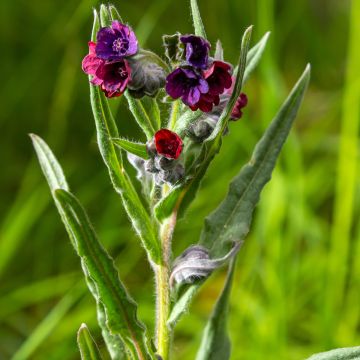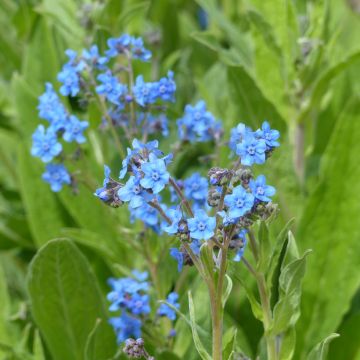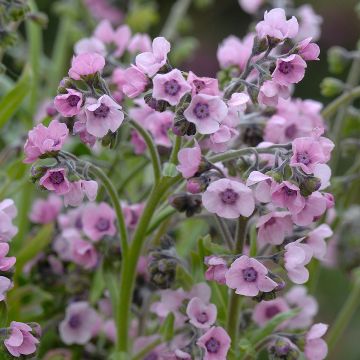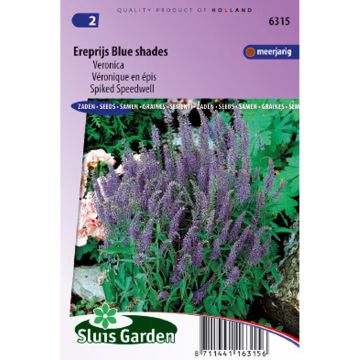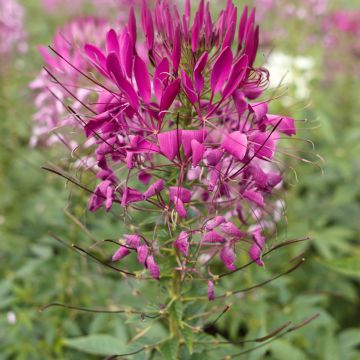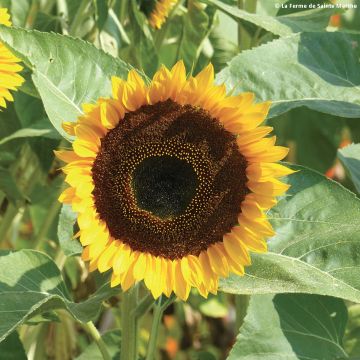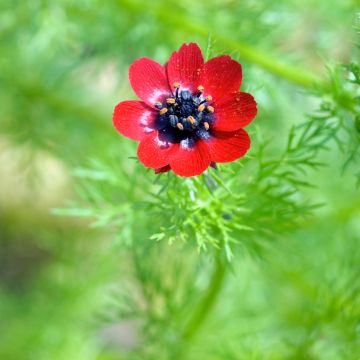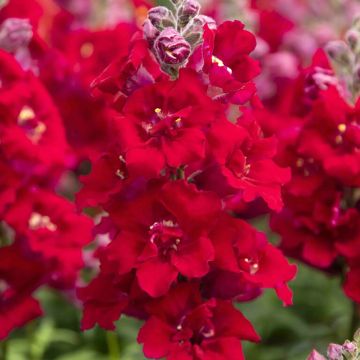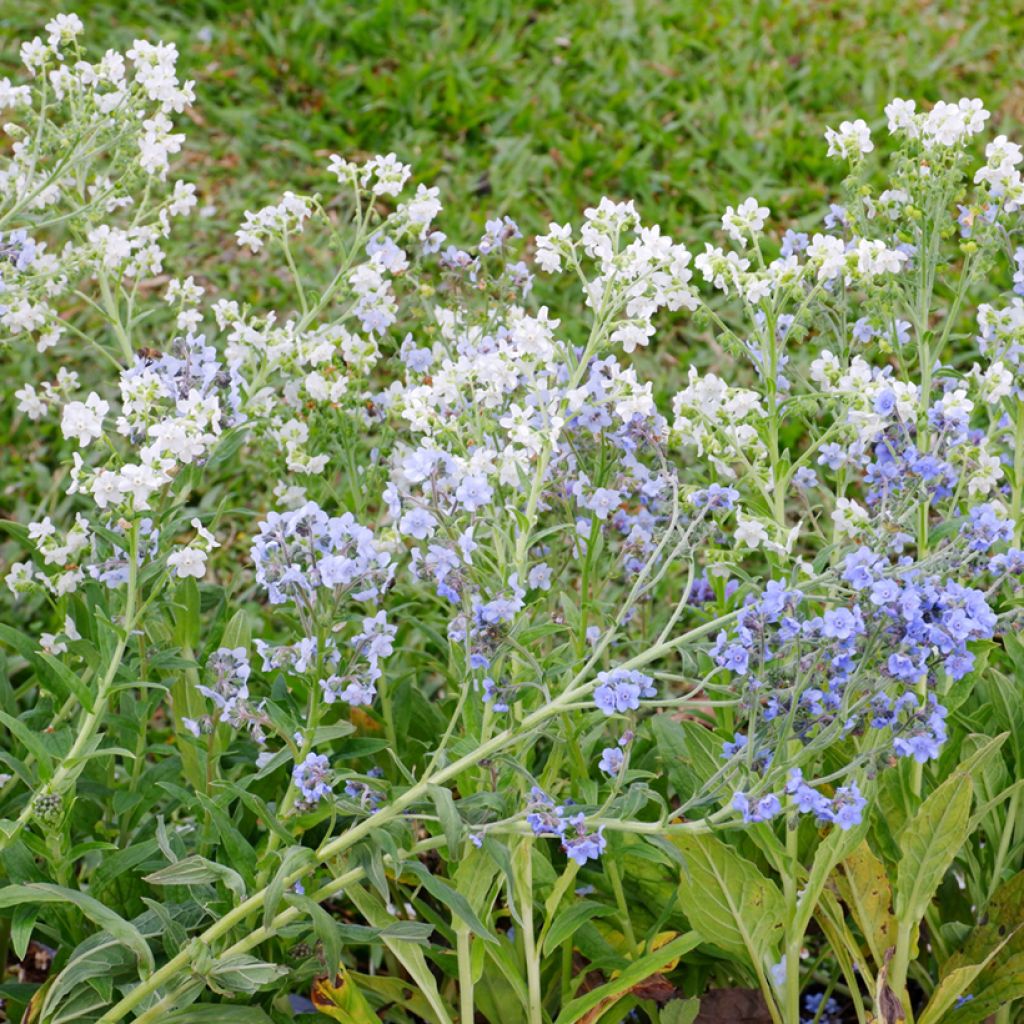

Cynoglossum Chill Out Seeds - Chinese Forget-Me-Not
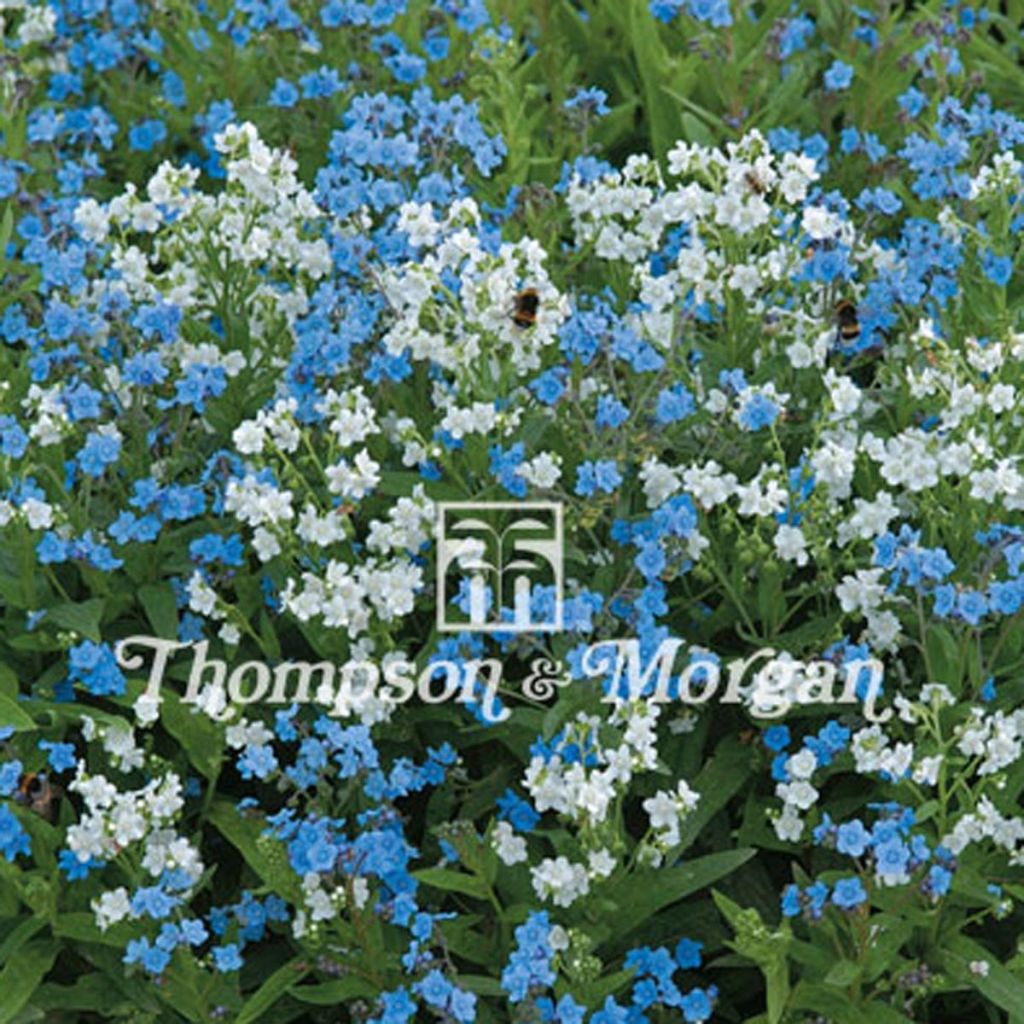

Cynoglossum Chill Out Seeds - Chinese Forget-Me-Not
Cynoglossum Chill Out Seeds - Chinese Forget-Me-Not
Cynoglossum zeylanicum Chill Out
Chinese hound's tongue
satisfactory
Francine B., 30/08/2017
This item cannot be shipped to the selected country
Dispatch by letter from €3.90
More information
Schedule delivery date,
and select date in basket
This plant carries a 6 months recovery warranty
More information
We guarantee the quality of our plants for a full growing cycle, and will replace at our expense any plant that fails to recover under normal climatic and planting conditions.
Seed-only orders are dispatched by sealed envelope. The delivery charge for seed-only orders is €3.90.
Does this plant fit my garden?
Set up your Plantfit profile →
Description
Cynoglossum zeylanicum 'Chill Out' also called Chinese Forget-Me-Not, is a charming duo of annual forget-me-nots that produces masses of tiny flowers in shades of dainty blue and white, from mid-spring to the end of summer. This collection is perfect for bringing a movement of relaxing colours and enlivening more destitute areas of the garden. This plant grows so well in our climates that it self-seeds durably throughout the years, becoming a timeless, almost eternal presence. It thrives well in moist, rich, well-drained soil, in partial shade in woodland, or in sunny beds and rock gardens.
Chinese Forget-Me-Not is a plant from the family Boraginaceae, native to the prairies, mountainous regions, open woodland, woodland edges of East China but also of India, the Himalayas and Afghanistan. This biennial plant is usually grown as an annual and develops rosettes of lanceolate, veined, dull green leaves covered with stiff hairs. From May to August, hairy stems that are well-branched on their upper half, emerge from the clump bearing leaves and at a height of 50 cm, inflorescences in the form of terminal racemes with small flowers with 5 petals, closely resembling our forget-me-nots, that are either dainty blue or white depending on the variety. Chinese Forget-Me-Not self-seeds abundantly in the garden.
Chinese forget-me-not is just as robust as any wild plant. It is traditionally used to showcase spring flowering bulbs (daffodils, narcissus, primrose), dwarf irises, or tulips, lending a light and airy feel to these coarse-textured plants. You can also plant it in large drifts in perennial beds, borders and window boxes. In warmer regions, it will enjoy growing in woodland, in the company of bleeding-hearts. The airy blooms of Chinese forget-me-nots are very decorative in spring bouquets and are useful for complementing larger flowers (especially peonies or roses). This simple plant is ideal for brightening up slightly abandoned areas of the garden.
Report an error about the product description
Flowering
Foliage
Plant habit
Botanical data
Cynoglossum
zeylanicum
Chill Out
Boraginaceae
Chinese hound's tongue
Cultivar or hybrid
Other Cynoglossum seeds - Hound's tongue
Planting and care
Direct sow the seeds outdoors, from April to June. Choose a partially-shaded spot with well-drained, well-prepared soil that has been raked to a fine tilth. Sow the seeds thinly in drills spaced 30 cm apart, barely covering them with soil. Water regularly, especially during dry periods. Germination usually takes 20-25 days. When the plants are large enough to be handled, transplant them 15 cm apart.
Another alternative is to sow indoors in February-March. Sow in good quality soil at a temperature of 18-23 °C and cover with a sprinkling of very fine garden compost or vermiculite. Keep the seedlings in the light as this helps promote germination. When the seedlings are large enough to be moved, transplant and grow them on in a cool place until the seedlings are large enough to be moved outside. Grow Chinese forget-me-not seedlings on in a frost-free room, before planting out in the open ground or in pots. Chinese forget-me-not thrives in well-prepared soils that are fertile without being excessively rich, in partial shade.
Sowing period
Intended location
-
, onOrder confirmed
Reply from on Promesse de fleurs
Flower seeds
Haven't found what you were looking for?
Hardiness is the lowest winter temperature a plant can endure without suffering serious damage or even dying. However, hardiness is affected by location (a sheltered area, such as a patio), protection (winter cover) and soil type (hardiness is improved by well-drained soil).

Photo Sharing Terms & Conditions
In order to encourage gardeners to interact and share their experiences, Promesse de fleurs offers various media enabling content to be uploaded onto its Site - in particular via the ‘Photo sharing’ module.
The User agrees to refrain from:
- Posting any content that is illegal, prejudicial, insulting, racist, inciteful to hatred, revisionist, contrary to public decency, that infringes on privacy or on the privacy rights of third parties, in particular the publicity rights of persons and goods, intellectual property rights, or the right to privacy.
- Submitting content on behalf of a third party;
- Impersonate the identity of a third party and/or publish any personal information about a third party;
In general, the User undertakes to refrain from any unethical behaviour.
All Content (in particular text, comments, files, images, photos, videos, creative works, etc.), which may be subject to property or intellectual property rights, image or other private rights, shall remain the property of the User, subject to the limited rights granted by the terms of the licence granted by Promesse de fleurs as stated below. Users are at liberty to publish or not to publish such Content on the Site, notably via the ‘Photo Sharing’ facility, and accept that this Content shall be made public and freely accessible, notably on the Internet.
Users further acknowledge, undertake to have ,and guarantee that they hold all necessary rights and permissions to publish such material on the Site, in particular with regard to the legislation in force pertaining to any privacy, property, intellectual property, image, or contractual rights, or rights of any other nature. By publishing such Content on the Site, Users acknowledge accepting full liability as publishers of the Content within the meaning of the law, and grant Promesse de fleurs, free of charge, an inclusive, worldwide licence for the said Content for the entire duration of its publication, including all reproduction, representation, up/downloading, displaying, performing, transmission, and storage rights.
Users also grant permission for their name to be linked to the Content and accept that this link may not always be made available.
By engaging in posting material, Users consent to their Content becoming automatically accessible on the Internet, in particular on other sites and/or blogs and/or web pages of the Promesse de fleurs site, including in particular social pages and the Promesse de fleurs catalogue.
Users may secure the removal of entrusted content free of charge by issuing a simple request via our contact form.
The flowering period indicated on our website applies to countries and regions located in USDA zone 8 (France, the United Kingdom, Ireland, the Netherlands, etc.)
It will vary according to where you live:
- In zones 9 to 10 (Italy, Spain, Greece, etc.), flowering will occur about 2 to 4 weeks earlier.
- In zones 6 to 7 (Germany, Poland, Slovenia, and lower mountainous regions), flowering will be delayed by 2 to 3 weeks.
- In zone 5 (Central Europe, Scandinavia), blooming will be delayed by 3 to 5 weeks.
In temperate climates, pruning of spring-flowering shrubs (forsythia, spireas, etc.) should be done just after flowering.
Pruning of summer-flowering shrubs (Indian Lilac, Perovskia, etc.) can be done in winter or spring.
In cold regions as well as with frost-sensitive plants, avoid pruning too early when severe frosts may still occur.
The planting period indicated on our website applies to countries and regions located in USDA zone 8 (France, United Kingdom, Ireland, Netherlands).
It will vary according to where you live:
- In Mediterranean zones (Marseille, Madrid, Milan, etc.), autumn and winter are the best planting periods.
- In continental zones (Strasbourg, Munich, Vienna, etc.), delay planting by 2 to 3 weeks in spring and bring it forward by 2 to 4 weeks in autumn.
- In mountainous regions (the Alps, Pyrenees, Carpathians, etc.), it is best to plant in late spring (May-June) or late summer (August-September).
The harvesting period indicated on our website applies to countries and regions in USDA zone 8 (France, England, Ireland, the Netherlands).
In colder areas (Scandinavia, Poland, Austria...) fruit and vegetable harvests are likely to be delayed by 3-4 weeks.
In warmer areas (Italy, Spain, Greece, etc.), harvesting will probably take place earlier, depending on weather conditions.
The sowing periods indicated on our website apply to countries and regions within USDA Zone 8 (France, UK, Ireland, Netherlands).
In colder areas (Scandinavia, Poland, Austria...), delay any outdoor sowing by 3-4 weeks, or sow under glass.
In warmer climes (Italy, Spain, Greece, etc.), bring outdoor sowing forward by a few weeks.

































